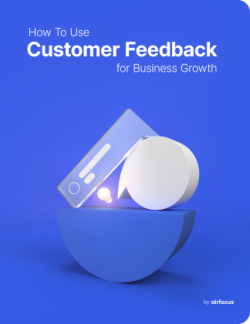Exploratory testing
What is exploratory testing?
Exploratory testing definition
Exploratory testing is the process of designing tests, developing tests, and executing tests all at the same time. Exploratory testing is important in Agile because it aligns with Agile’s values. It helps agile teams work together to define a product during its development and place their focus on creating a working product over just following set processes.
During exploratory testing, testers design a test, execute it, and then note the results. They then use these results to create the next test. The process is iterative and lines up with the agile method of creating a lightweight, flexible approach to development.
Exploratory testing aims to rest for bugs by recreating the experience of end-users. This means allowing freedom in the testing process and letting testers make spontaneous choices during testing.
3 different types of exploratory testing
1. Exploratory testing based on scenario - Scenario-based exploratory testing uses real user scenarios. Testers evaluate the product against each user scenario and try to match up the scenario in every possible way. This type of exploratory testing tries to test as many scenarios as possible.
2. Exploratory testing based on strategy - Exploratory testing based on strategy is done by testers who are familiar with the software. To find more difficult bugs, it uses boundary value analysis, equivalence techniques, and risk-based techniques.
3. Freestyle Exploratory Testing - In freestyle exploratory testing, testers quickly move through an application without a set structure or format. They work to validate the work of other testers and test specific bugs.
Metrics and KPIs for measuring exploratory testing success
Some metrics and KPIs to measure the success of your exploratory testing include:
Defect discovery rate
The defect discovery rate is a valuable metric for determining how effective your testing process is in revealing product issues. Measuring your success in rate detecting defects can help you find ways to improve it. That offers various benefits, like:
Spotting issues early in the development process
Creating stronger products overall
Saving time and money by not needing to fix issues down the line
Boosting user satisfaction through improved products and usability
The higher your defect discovery rate, the more effective your testing is.
Test coverage
Test coverage measures the number of test cases across a whole software product to ensure that you’re fully testing the code and identifying how much code is exercised through specific tests.
Test coverage helps make further test cases that expand coverage and minimizes test cases that fail to boost coverage. You can find out which paths remain untested, and you may spot defects at both code and unit levels.
Critical flows
Critical flows are interactions that must function properly to provide users with a positive product experience. By identifying the most important flows in any product, you can build tests to reveal any issues affecting user experience. These vary based on user type and the product area, like critical cart actions in a site’s shop section.
Exploratory testing in different development stages
Your product team can use exploratory testing throughout the entire software development lifecycle, from initial design to post-launch maintenance. Continually providing users with a product of the highest standard is vital to retain their loyalty and a competitive edge.
You can use exploratory testing to:
Run tests during early development stages when scripted tests are unavailable.
Test particularly complex software products when creating fully comprehensive test cases is impractical.
Validate recent changes through regression testing and confirm that those changes have not negatively impacted other functions.
Test issues as they arise (ad hoc).
Test the product’s overall functionality to identify potential design or architectural issues.
Test the user interface and visual layout, which is key for a positive user experience.
Test for effective integration of different software components.
While teams may initially find exploratory testing a little daunting, it is a powerful aspect of software development for many companies.
Exploratory testing: examples
Example 1: Say you need to test a new website where people can purchase headphones.
Things you need to test could include the add-to-cart button, checkout, and customer support contact options. An exploratory test could start as a typical user might by browsing through the headphones for sale. Then the tester could select a pair and add them to their cart. This would then lead to testing all the functions of the cart including adding things to the card, editing quantities, removing things from the cart, and heading to checkout.
The idea is to let your knowledge of the product and users guide your testing. As you go, the results you get will then guide your testing further.
Example 2: Let’s say a pizza restaurant is updating its website and wants to test that its booking functionality is working correctly.
If it’s not, potential customers may be unable to reserve a table, and the restaurant will lose out on sales. Users may also think that the business is not credible or even untrustworthy.
Exploratory testing would involve navigating to the booking area of the website and completing each step, just as a user would, to ensure that it flows appropriately. This would cover everything from choosing a specific day and time to submitting contact details.
General FAQ

Glossary categories
All product feedback in one place

Experience the new way of doing product management








